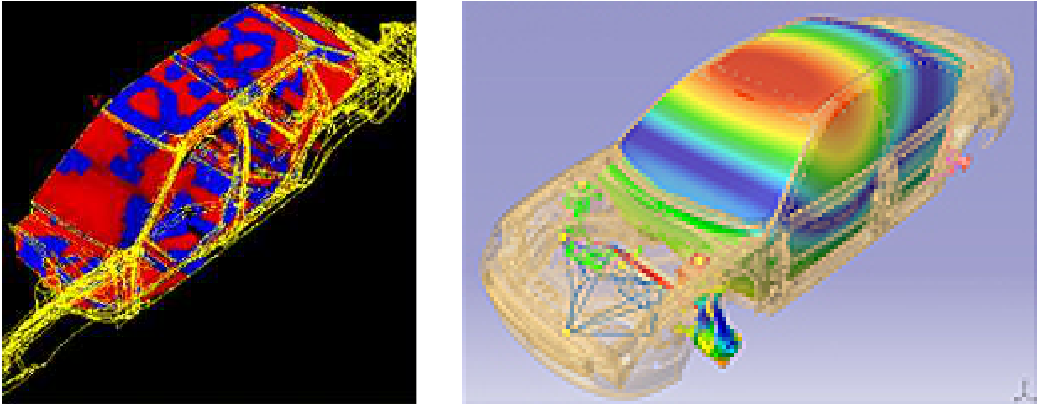Iterative solutions to sequences of Helmholtz problems
Jan de Gier
Daily supervisor: Martin van Gijzen
Site of the project:
TU Delft in collaboration with TU Berlin
start of the project: December 2011
The Master project has been finished in August 2012
by the completion of the
Masters Thesis
and a final
presentation
has been given.
For working address etc. we refer to our
alumnipage.
Summary of the master project:
Background noise in cars is discomforting for occupants and hence the reduction of the noise emissions is considered to be an important aspect in the design of new cars. In order to reduce the noise in a car, a mathematical model of the acoustic behaviour of this car and the propagation of sound inside this car is needed. At the basis of this model lies a system of coupled differential equations that describe for instance the sources of noise, such as vibrating car parts and the engine, and the propagation of this noise through the structure of and the air inside the car. Since different sound frequencies result in different ways of propagation, the differential equations need to be solved for a whole range of frequencies. In addition, these solutions need to be used within an optimization routine.
The goals of this project are modest and we will not (try to) find a solution to this complex problem. Instead, we will investigate certain numerical methods that are applicable to the linear systems that follow from the discretisation of the differential equations that describe the acoustics of the car. These systems are given by
the Helmholtz equation.
We will solve these Helmholtz systems for sequences of frequencies with the use of IDR(s) or multi-shift QMRIDR(s) and a shifted Laplace preconditioner.

FEM model of the car structure and of the fluid

Contact information:
Kees
Vuik

Back to the
home page
or the
Master students page of Kees Vuik

![]()
![]()